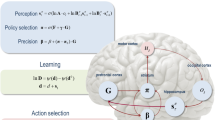Abstract
In their enthusiasm for programming, computational linguists have tended to lose sight of what humansdo. They have conceived of conversations as independent of sound and the bodies that produce it. Thus, implicit in their simulations is the assumption that the text is the essence of talk. In fact, unlike electronic mail, conversations are acoustic events. During everyday talk, human understanding depends both on the words spoken and on fine interpersonal vocal coordination. When utterances are analysed into sequences of word-based forms, however, these prosodic aspects of language disappear. Therefore, to investigate the possibility that machines might talk, we propose acommunion game that includes this interpersonal patterning. Humans and machines would talk together and, based on recordings of them, a panel would appraise the relevant merit of each machine's simulation by how true to life it sounded. Unlike Turing's imitation game, the communion game overtly focuses attention, not on intelligence, but on language. It is designed to facilitate the development of social groups of adaptive robots that exploit complex acoustic signals in real time. We consider how the development of such machines might be approached.
Similar content being viewed by others
References
Allen, W.S. (1973)Accent and rhythm prosodic, features of latin and Greek: A study in theory and reconstruction. Cambridge: Cambridge University Press.
Alper, G. (1990). A psychoanalyst takes the Turing test.Psychoanalytic Review 77(1), 59–68.
Atkinson, J.M. & Heritage, J., Eds. (1984).Structures of social action: Studies in conversation analysis. Cambridge: Cambridge University Press.
Auer, P., and di Luzio, A., Eds. (1992).The contextualization of language Amsterdam: John Benjamens.
Bateson, G. (1979).Mind and nature: A necessary unity. New York: Ballantine.
Bateson, P.P.G. (1988). Biological evolution of cooperation and trust. In D. Gambetta (Ed.),Trust: Making and breaking of cooperative relations Oxford: Blackwell.
Bieri, P. (1988). Thinking machines: Some reflections on the Turing test.Poetics Today, 9(1), 163–186.
Block, N. (1978). Troubles with functionalism. In C.W. Savage (Ed.),Perception and cognition: Issues in the foundations of psychology. Minnesota studies in the philosophy of science (Vol. 9, pp. 261–325). Minneapolis: University of Minnesota Press.
Block, N. (1981). Psychologism and behaviorism.The Philosophical Review, 90(1), 5–43.
Bloomfield, L. (1933).Language. New York: Henry Holt.
Brooks, R.A. (1991a). Intelligence without reason. InIJCAI-91: Proceedings of the Twelfth International Conference on Artificial Intelligence, Sydney, Australia (Vol. 1), pp. 569–595. San Mateo, CA: Morgan Kaufmann.
Brooks, R.A. (1991b). Intelligence without representation.Artificial Intelligence, 47, 139–159.
Brown, E.D. (1979). The song of the common crow,Corvus brachyrhynchos. Master's thesis at University of Maryland, College Park.
Carling, C. & Moore, T. (1982).Language understanding: Towards a post-Chomskyan linguistics. New York: St. Martin's Press.
Chomsky, N. (1957)Syntactic structures. The Hague: Mouton.
Chomsky, N. (1965).Aspects of the theory of syntax. Cambridge, MA: MIT Press.
Chomsky, N. (1986).Knowledge and language: Its nature, origin, and use. New York: Praeger.
Chomsky, N. (1988).Language and problems of knowledge: The Managua lectures. Cambridge, MA: MIT Press.
Clocksin, W.F., & Moore, A.M. (1989). Experiments in adaptive state-space robotics. InAISB89: Proceedings of the Seventh Conference of the Society for the Study of Artificial Intelligence and Simulation of Behaviour, Brighton, UK, pp. 115–125. San Mateo, CA: Morgan Kaufmann.
Colby, K.M., Hilf, F.D., Weber, S., Kraemer, H.C. (1972). Turing-like indistinguishability tests for the validation of a computer simulation of paranoid processes.Artificial Intelligence, 3, 199–221.
Cowley, S. J. (1993).The place of prosody in Italian conversations Unpublished doctoral dissertation, University of Cambridge, Cambridge, UK.
Cowley, S.J. (1994). Conversational functions of rhythmical patterning—A behavioural perspective.Language & Communication, 14(4), 353–376.
Cowley, S.J. (1996). Conversation, coordination, and vertebrate communication.Semiotica.
Crystal, D. (1969).Prosodic systems and intonation in English. Cambridge: Cambridge University Press.
Dreyfus, H.L. (1992).What computers still can't do: A critique of artificial reason. Cambridge, MA: MIT Press.
Farabaugh, S. M. (1982). The ecological and social significance of duetting. In D. Kroodsma, E.H. Miller, and H. Ouelett (Eds.).Acoustic communication in birds: Song learning and its consequences (Vol. 2, pp. 85–124). London: Academic Press.
Fodor, Jerry. (1975)The language of thought. New York: Cromwell.
French, R.M. (1990). Subcognition and the limits of the Turing test.Mind 99(393), 53–65.
Giles, H. & Coupland, N. (1991).Language: Contexts and consequences. Milton Keynes: Open University Press.
Gödel, K. (1931). Uber formal unentscheidbare Sätze der Principia Mathematica und verwandter Systeme I.Monatshefte für Mathematik und Physik, 38, 173–198.
Gumperz, J.J. (1982),Discourse strategies. Cambridge: Cambridge University Press.
Gunderson, K. (1971).Mentality and machines New York: Doubleday.
Halliday, M.A.K. (1978). Meaning of the construction of reality in early childhood. In H.L. Pick, Jr., & E. Salzman (Eds.),Modes of perceiving and processing information (pp. 67–96) Hillsdale, NJ: Erbaum.
Halliday, M.A.K. (1979). One child's protolanguage. In M. Bullowa (Ed.),Before speech: The beginning of interpersonal communication (pp. 171–190). London: Cambridge University Press.
Harnad, S. (1989). Minds, machines and Searle.Journal of Experimental and Theoretical Artificial Intelligence, 1, 5–25.
Harnad, S. (1990). The symbol grounding problem.Physica D, 42, 335–346.
Harré, R., & Gillett, G. (1994).The discursive mind. Thousand Oaks, CA: Sage Publications.
Harris, R. (1981).The language myth. London: Duckworth.
Harris, R. (1987).The language machine. London: Duckworth.
Hart, J. `t, Collier, R. & Cohen, A. (1990).A perceptual study of intonation: An experimental approach to speech melody. Cambridge: Cambridge University Press.
Hauser, L. (1993). Reaping the whirlwind: Reply to Harnad's “Other Bodies, Other Minds.”Minds and Machines, 3(2), 219–237.
Hobbs, A.G., Yeomanson, E.W., & Gee, A.C. (1973).Teleprinter Handbook. Hertfordshire, UK: Radio Society of Great Britain.
Hultzén, L.S. (1964). Grammatical intonation. In D. Abercrombie, D.B. Fry, P.A.D. MacCarthy, N.C. Scott, J.L.M. Trim (Eds.),In honour of Daniel Jones: Papers contributed on the occasion of his eightieth birthday (pp. 85–95). London: Longmans.
Huxor, A.P. (1994).Artificial intelligence as writing: Knowledge-based hypertext systems as medium for communication. Unpublished doctoral dissertation, Middlesex University, Middlesex, UK.
Jacquette, D. (1993). A turing test conversation.Philosophy, 68(264), 231–233.
Karelis, C. (1986). Reflections on the Turing test.Journal for the Theory of Social Behavior, 16(2), 161–172.
Katz, B. (1990). Using English for indexing and retrieving. In P.H. Winston and S.A. Shellard (Eds.),Artificial Intelligence at MIT: Expanding Frontiers. Cambridge, MA: MIT Press.
Klatt, D.H. (1977). Review of the ARPA speech understanding project.JASA, 62(6) 1345–1366.
Krebs, J.R., & Dawkins, R. (1984). Animal signals: Mind-reading and manipulation. In J. R. Krebs and N.B. Davies (Eds.),Behavioral ecology: An evolutionary approach (2nd ed., pp. 380–402) Oxford, UK: Blackwell Scientific.
Laver, J. (1980).The phonetic description of voice quality. Cambridge, UK: Cambridge University Press.
Laver, J. (1993).Principles of phonetics. Cambridge, UK: Cambridge University Press.
Levinson, S.C. (1995). Interactional biases in human thinking. In E.N. Goody (Ed.),Social intelligence and interaction. Cambridge: Cambridge University Press.
Lenat, D.B. & Guha, R.V. (1990).Building large knowledge-based systems: Representation and inference in the Cyc project. Reading, MA: Addison-Wesley.
Locke, J. (1993).The child's path to spoken language. Cambridge, MA: Harvard University Press.
Lowerre, T., & Reddy, D.R. (1980). The Harpy speech understanding system. In W.A. Lea (Ed.),Trends in speech recognition (pp. 340–360). Englewood Cliffs, NJ: Prentice-Hall.
Lucas, J.R. (1961). Minds, machines and Gödel.Philosophy, 36, 112–127.
Lyons, J. (1977).Semantics (Vols. 1–2). Cambridge, UK: Cambridge University Press.
Malinowski, B. (1923). The problem of meaning in primitive languages. In C.K. Ogden and I.A. Richards,The meaning of meaning: A study of the influence of language upon thought and the science of symbolism (pp. 451–510). London: Kegan Paul, Trench, Trubner & Co.
Martin, P.R., & Bateson, P. (1986).Measuring behavior: An introductory guide. Cambridge, UK: Cambridge University Press.
Matthews, P.H. (1993).Grammatical theory in the United States from Bloomfield to Chomsky. Cambridge, UK: Cambridge University Press.
McDermott, D. (1993). Book review: Building large knowledge-based systems: Representation and inference in the Cyc project, D.B. Lenat & R.V. Guha.Artificial Intelligence, 61(1), 53–63.
Mey, J.L. (1993).Pragmatics. Oxford: Basil Blackwell.
Michie, D. (1993). Turing's test and conscious thought.Artificial Intelligence, 60(1), 1–22.
Michie, D., & Chambers, R. (1968). Boxes: an experiment in adaptive control. In E. Dale and D. Michie (Eds.),Machine Intelligence (Vol. 2, pp. 137–152). Edinburgh: Oliver & Boyd.
Nilsson, N.J. (1984). Shakey the robot. Technical Note 323, SRI AI Center, Menlo Park, CA.
Ogden, C.K., & Richards, I.A. (1923).The meaning of meaning: A study of the influence of language upon thought and the science of symbolism. London: Kegan Paul, Trench, Trubner & Co.
Omohundro, S.M. (1990). Geometric learning algorithms.Physica D, 42(1–3), 307–321.
Penrose, R. (1989).The emperor's new mind Oxford, UK: Oxford University Press.
Prevost, S. & Steedman, M. (1994). Specifying intonation from context for speech synthesis.Speech and communication, 15, 139–153.
Saussure, F. de (1916).Course de linguistique générale. Paris: Payot. English Translation [1959],Course in general linguistics. London: Peter Owen.
Schank, R.G., & Ableson, R.P. (1977).Scripts, Goals, Plans and Understanding. Hillsdale, NJ: Erlbaum.
Searle, J.R. (1980). Minds, brains, and programs.The Behavioral and Brain Sciences, 3, 417–457.
Shannon, C.E. and Weaver, W. (1949).The mathematical theory of communication. Urbana, IL: University of Illinois Press.
Shanon, B. (1989). A simple comment regarding the Turing test.Journal for the Theory of Social Behavior 19(2), 249–259.
Shieber, S.M. (1994). Lessons from a restricted Turing test.Communications of the ACM, 37(6), 70–78.
Sims, K. (1994). Evolving 3D morphology and behavior by competition.Artificial Life IV Proceedings, pp. 28–39. Cambridge: MIT Press.
Slezak, P. (1982). Gödel's theorem and the mind.British Journal for the Philosophy of Science, 33, 41–52.
Smolensky, P. (1988). On the proper treatment of connectionismBehavioral and Brain Sciences, 11(1), 1–23.
Sommerhoff, G., & MacDorman, K.F. (1994). An account of consciousness in physical and functional terms: A target for research in the neurosciences.Integrative Physiological and Behavioral Science, 29(2), 151–181.
Sperber, D. & Wilson, D. (1986).Relevance: Communication and cognition. Oxford: Basil Blackwell.
Steedman, M. (1991). Structure and intonation.Language, 68, 260–296.
Strawson, P.F. (1950). On referring.Mind, 59, 320–344.
Sutton, R.S. (1988). Learning to predict by the methods of temporal differences.Machine Learning, 3(1), 9–44.
Thorpe, W.H. (1972). Duetting and antiphonal song in birds: Its extent and significance,Behavior, Suppl.18, pp. 1–197.
Trevarthen, C. (1979). Communication and co-operation in early infancy: A description of primary intersubjectivity. In M. Bullowa (Ed.),Before speech: The beginning of interpersonal communication (pp. 321–348). Cambridge: Cambridge University Press.
Trevarthen, C. (1986). Sharing makes sense: Intersubjectivity and the making of an infant's meaning. In R. Steele and T. Threadgold (Eds.),Language Topics: Essays in honour of M. Halliday, (Vol. 1, pp. 177–200) Amsterdam: J. Benjamens.
Turing, A. (1950). Computing machinery and intelligence.Mind 59, 433–460.
Üxküll, J.J., Baron von (1921).Umwelt und Innenwelt der Tiere. Berlin: Springer.
Waibel, A. (1988).Prosody and speech recognition. London: Pitman.
Watkins, C.J.C.H., & Dayan, P. (1992). Q-learning.Machine Learning, 8(3–4), 279–292.
Weizenbaum, J. (1965). ELIZA—a computer program for the study of natural language communication between man and machine.Communications of the Association for Computing Machinery, 9, 36–45.
Weizenbaum, J. (1976).Computing power and human reason: From judgment to calculation. San Francisco: W. H. Freeman.
Wheddon, C., & Linggard, R. (1990).Speech and language processing. London: Chapman & Hall.
Wilensky, R. (1983).Planning and understanding: A computational approach to human reasoning. Reading, MA: Addison-Wesley.
Winograd, T. & Flores, F. (1986).Understanding computers and cognition: A new foundation for design. Norwood, NJ: Ablex.
Winograd, T. (1972).Understanding natural language New York: Academic Press.
Wittgenstein, L. (1958).Philosophical investigations. Oxford, UK: Basil Blackwell.
Author information
Authors and Affiliations
Rights and permissions
About this article
Cite this article
Cowley, S.J., MacDorman, K. Simulating conversations: The communion game. AI & Soc 9, 116–137 (1995). https://doi.org/10.1007/BF01210600
Published:
Issue Date:
DOI: https://doi.org/10.1007/BF01210600




